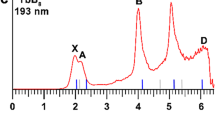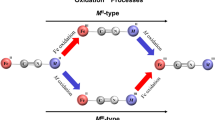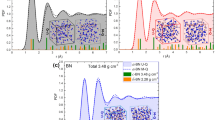Abstract
IN two recent letters to NATURE (May 24 and 31) Mr. W. Jevons has questioned the adequacy of my evidence as to the oxide origin of a band spectrum which he had previously ascribed to boron nitride.1 In his second letter he reports that these bands are absent from the spectrum of the discharge through a mixture of BCl3 and O2, although the ordinary boric oxide bands are present. This he considers convincing evidence against BO as the emitter of the bands in question. In view, however, of evidence outlined below, a full account of which will appear probably in the Physical Review, there seems little room for doubt that the bands are really due to BO and not to BN. The other oxide bands may then be ascribed, as in the past, and in accordance with their complex character, to B2O3.
This is a preview of subscription content, access via your institution
Access options
Subscribe to this journal
Receive 51 print issues and online access
$199.00 per year
only $3.90 per issue
Buy this article
- Purchase on Springer Link
- Instant access to full article PDF
Prices may be subject to local taxes which are calculated during checkout
Similar content being viewed by others
References
W. Jevons, Roy. Soc. Proc. A, 91, 120–34 (1915).
Roy. Soc. Proc. A, 93, 254 (1917).
Phys. Rev., 23, 295 (1924).
E. P. Lewis (Astrophys. Journ., 20, 49, and 58 (1904)) has shown that the bands are, without much doubt, due to NO; and Birge finds that the and bands have a common final state. Also, their simple structure indicates a diatomic emitter.
Similar experiments by Jevons (l.c.) on a boron arc were inconclusive, although favouring the nitride origin of the BO bands.
It can be shown that no appreciable error is introduced here in the isotope ratios by using data on heads. The nn terms are due to the fact that the data are for heads.
W. Heisenberg, Zeit. für Physik, 8, 273 (1922).
Author information
Authors and Affiliations
Rights and permissions
About this article
Cite this article
MULLIKEN, R. The Band Spectrum of Boron Monoxide. Nature 114, 349–350 (1924). https://doi.org/10.1038/114349a0
Issue Date:
DOI: https://doi.org/10.1038/114349a0
Comments
By submitting a comment you agree to abide by our Terms and Community Guidelines. If you find something abusive or that does not comply with our terms or guidelines please flag it as inappropriate.



